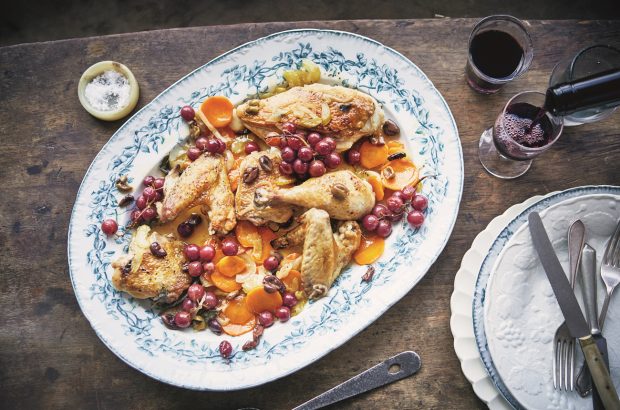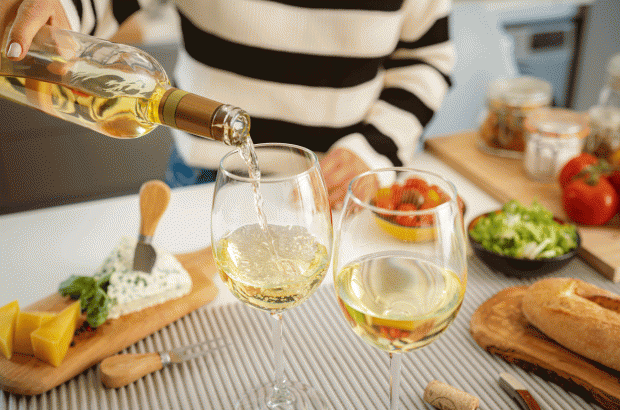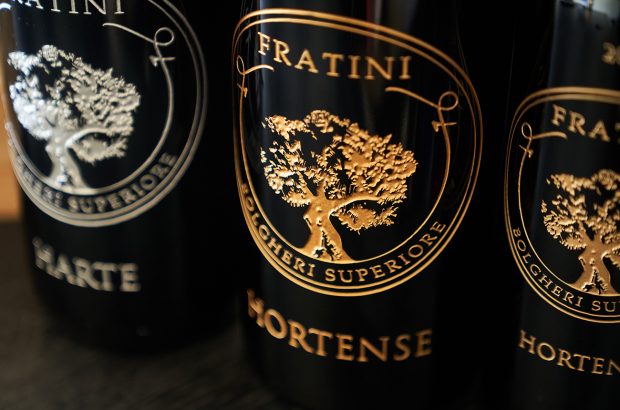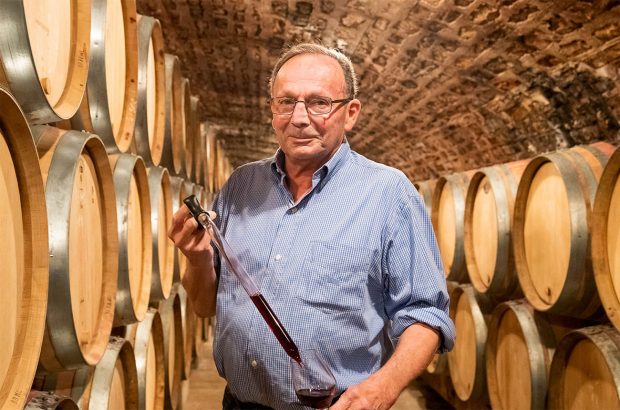To set the record straight with a certain customs official at a London airport who directed me into the non-EU channel, Sardinia is part of Italy and therefore part of the European Union. But you don’t argue with customs officials while on their patch, do you? But then, situated in the Mediterranean, 120 miles west of the Italian mainland, 7.5 miles south of Corsica and 120 miles north of Africa, Sardinia also revels in such confusion. It has been occupied over the centuries variously by Greeks, Phoenicians, Romans, Carthaginians and Catalans, and became part of Italy in 1726, yet it still actively encourages its image of ‘semi-independence’. Its wine industry has a similar ‘otherness’ to it. Until recently, much of that difference was down to a less technologically advanced approach than the mainland, with a lot of Sardinia grapes bulk produced for nondescript wines. However, that otherness is now beginning to be translated into an individuality that is standing the island’s quality-driven wines in good stead to hold their own in the fiercely competitive international market.
Sella & Mosca
At the fore of Sardinia’s quality drive – and, indeed, of contemporary winemaking – is the large, privately owned winery, Sella & Mosca, situated to the north of Alghero and stretching over 650 hectares (ha). Emanuele Bonomi, export director and son of the owner Carlo, says that the general quality level of winemaking in Sardinia has improved enormously in the last decade.
Château de Sancerre has a new owner
‘To some extent, we are the New of the Old World,’ he muses, ‘a new area within a huge winemaking tradition. In the last five years, people have become very interested in Sardinian wine and its different grape varieties, but a lot of people still have to discover us – we have much further to go.’Sardinia’s late arrival on the scene comes at a time when there is great interest in grape varieties. ‘We have a very strong belief in our own indigenous grapes: Vermentino, Torbato, Cannonau and Carignano. We really believe in these and want to give them a major push,’ says Bonomi. ‘We want to keep the Sardinian tradition going, and perfect what we know best. I strongly believe that we can be number one in Vermentino, Cannonau and Torbato: you just won’t find these varieties in California or South Africa.’
Vermentino di Gallura is the only Sardinian DOCG (given in 1997) and in Sella’s Monteoro 1999 has a deliciously crisp, clean palate, giving an elegant wine. Torbato comes in many guises – as dry, sparkling and sweet white – and gives a well-structured wine that Bonomi believes deserves a DOCG. ‘I think the personality of Torbato merits it. It’s a historical grape, rarely seen, and it can produce a great wine.’ Turning to reds, Cannonau (Grenache), imported from Spain more than 200 years ago, is now considered native to the island and has great credentials. The Cannonau di Sardegna Riserva 1997 DOC has a generous plummy, raisiny character – aromatic and elegant with high acidity. The Carignano had a very distinctive burned rubber edge to it, while Sella’s premium wine is Marchese-di-Villamarina; the 1996, just released, is attractive with seductive layers of silky black fruit, hints of oak and good acidity. Its Anghelu Ruju, vino liquoroso, Cannonau, is aged in old oak casks for more than five years, with 18% abv and 7% residual sugar. Bonomi admits that only a short while ago he was less sure of the path that Sella was taking. ‘Six years ago, I had different opinions. We were battling with our local grape varieties and I wondered whether to go more international, take the Cabernet route. I’m now really glad that Consorte kept us with indigenous varieties, where we can take the number one slot.’Credit, indeed, goes to Mario Consorte, Sella’s winemaker for the last 40 years. ‘I only visited Sardinia to work the harvest,’ smiles Consorte. ‘That was the autumn of 1961 and I promised my mother I would be home for Christmas. How time flies!’ Consorte grew up in the Veneto among Prosecco and Valpolicella. ‘My culture is in white wine from the Veneto, and this was very important in building a new philosophy for white production in Sardinia,’ he says.
As a mainlander who fell in love with the landscape and freedom offered by Sardinia, Consorte adds: ‘The long distance from Italy can be dangerous. It’s necessary to maintain contact with oenologists and universities, so that you keep abreast of what’s going on.’ Consorte himself is president of the AIE (Asssociation of Italian Enotechnicians) in Milan, which requires him to travel several times a year. I asked whether there is any kind of Sardinian body, or group, that meets to share information, work out problems and so on. ‘Like everything in Italy, everyone fights their own war,’ replies Bonomi. ‘I am happy if everyone improves, but I’m not going to tell them how to do it.’
The winery owes its existence to the mainland, as it was in 1899 that two Piedmontese gentlemen, Sella and Mosca, visited north west Sardinia on a hunting trip and ended up buying 600ha of scrubland at I Piani, Alghero (that region was given its DOC in 1995). The men set up the first unique nursery in Sardinia, planting 1,600 different clones and varieties. That nursery is still going today, now housing a selection including different Cabernet Sauvignon clones, Greco di Tufo, three different Sauvignon Blanc clones, Falanghina and four different Cannonau clones. Vineyard management is essential, according to Bonomi. As part of an ongoing program, Sella has moved almost all its vineyards from the old espalier training system to the pergola method, to give shade to the grapes from the sun, yet maximise the sun on the leaves. ‘The shade from the leaves moderates the climate, giving good acidity in the wines,’ says Consorte. Continuity has been an advantage, and Bonomi points out that having the same oenologist for 40 years has led to ‘constant improvement over the years; long evolvement, rather than rapid change’.
Expansion
Plans are currently being made to increase the size of the winery, and the team are searching for another 150ha on the island, specifically to grow more native grapes. Expansion in mainland Italy is also a possibility. ‘We want to expand and it would be logical to go somewhere on the mainland – possibly Piedmont or Tuscany, yet we have a lot on our hands right now,’ says Bonomi.
Expansion has also led to a venture in Quingdao, China, where Sella invested five years ago and now owns 200ha and a winery, finished last year. ‘The venture is very new,’ says Bonomi, ‘but the potential is there. There is huge demand, but currently the quality of wine being drunk is very low.’ And, though strictly a family venture, separate from Sella, the Bonomi family bought the 80ha Château Lemargue in Costières de Nîmes, two years ago.
Emphasis here is on low-yielding Syrah and Grenache (ah, Cannonau), along with Grenache Blanc, Roussane and Rolle (oh, Vermentino). ‘It’s an idea that my father and I have had for a while. To enter at the really high end. There is such potential in the area, and we think that we have the quality,’ says Bonomi enthusiastically.
So if Sella is to some extent leading one particular path in Sardinia, who do they admire on the mainland? ‘Oh, this is political,’ laughs Bonomi. ‘Gaja for making a name for himself from nothing. Or, no, it would be Marchese Incisa at Bolgheri for what he’s done to Italian red wine; for understanding the way to go years ago and for taking everyone else along that way.’ So any parallels (one has to ask the question)? ‘If we are to bring the Sardinian wine industry forward, then other producers have to work hard,’ says Bonomi emphatically. ‘Quality has to come first. We are not going to lead them.’














